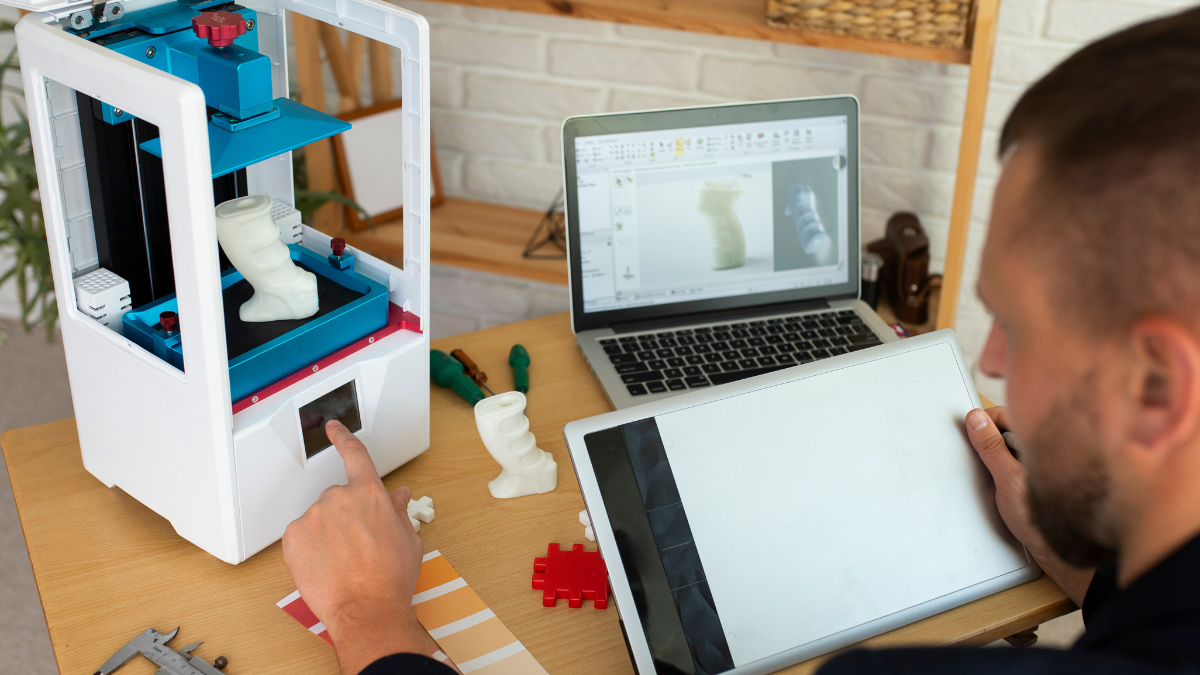BLOG
MP3Juices: Everything You Need to Know About This Popular MP3 Downloader

In the digital age, access to music has become more diverse and convenient than ever before. Some users still prefer to download their favorite tracks for offline listening. That’s where platforms like MP3Juices come into the spotlight.
If you’ve ever searched for a free way to download MP3 music files online, chances are you’ve come across MP3Juices. It’s one of the most popular online MP3 downloaders that lets users convert music and video links into MP3 files, which can then be saved to any device. In this guide, we’ll take a deep dive into everything you need to know about MP3Juices — how it works, its features, legality, alternatives, and safety concerns.
What Is MP3Juices?
MP3Juices is a free online platform that allows users to search, convert, and download MP3 audio files from video streaming websites, primarily YouTube. It’s essentially a YouTube to MP3 converter with an integrated search engine that provides access to millions of tracks without the need for registration or software installation.
Users can either enter a search query (like a song title or artist name) or paste a URL from a video hosting site. Within seconds, MP3Juices generates a downloadable MP3 file, offering options to preview or download the song directly.
Key Features of MP3Juices
MP3Juices is popular for several reasons. Below are some of its main features:
✅ Free to Use: No sign-up or payment is required.
✅ No Software Needed: Everything runs through the web browser.
✅ Integrated Search Engine: You can search songs by title, artist, or keywords.
✅ Supports YouTube and Other Platforms: While YouTube is the main source, MP3Juices may also support platforms like SoundCloud, Dailymotion, Vimeo, and others.
✅ Fast Conversion: Converts videos to audio within seconds.
✅ Mobile-Friendly: Works well on Android and iOS browsers.
How to Use MP3Juices
Using MP3Juices is simple and intuitive. Here’s a step-by-step guide:
Go to the Website: Open your browser and navigate to MP3Juices.cc (note that there are many clones and similar domains).
Enter Your Query or URL:
Alternatively, paste a YouTube URL or other video link.
Search and Wait: MP3Juices will search for the content and begin the conversion.
Choose a Result: Once results are displayed, click “Download” next to the version you prefer.
Download the File: After conversion, click the final download button, and the MP3 file will be saved to your device.
Is MP3Juices Legal?
The legality of using MP3Juices depends on a few factors:
Copyrighted Content: Downloading copyrighted material without permission is illegal in most countries. If you use MP3Juices to download songs that are protected by copyright (which most commercial music is), you’re likely infringing on intellectual property rights.
Personal Use vs. Distribution: Some argue that downloading for personal use falls into a legal gray area, though that’s not a guarantee.
Terms of Service Violations: Downloading YouTube videos using third-party tools like MP3Juices violates YouTube’s terms of service.
In short, while MP3Juices itself is not illegal to visit, the content you choose to download might be.
Is MP3Juices Safe?
Safety is a valid concern when using free downloading websites. Here’s what you should know:
Pros:
MP3Juices does not typically ask for personal information.
It doesn’t require downloading any additional software.
Cons:
Ads and Pop-ups: Many MP3Juices mirrors are loaded with ads, pop-ups, or misleading download buttons.
Clone Sites: Not all “MP3Juices” websites are legitimate. Some are fake and host malware.
Risk of Viruses: Always have antivirus software enabled when using such platforms.
Tips for Staying Safe:
Use an ad blocker and antivirus protection.
Stick to the main domain (mp3juices.cc or similarly well-known ones).
Avoid clicking on suspicious links or buttons.
Why Do People Still Use MP3Juices?
Despite the legal gray areas and security concerns, millions still use MP3Juices. Here’s why:
Offline Access: Some people live in areas with limited internet connectivity and prefer offline music access.
No Subscription Needed: Unlike Spotify Premium or Apple Music, MP3Juices is free.
Customization: Users can create custom playlists without using traditional music platforms.
Simplicity: The interface is straightforward and accessible to all age groups.
Device Compatibility: Works on almost any device with a browser — Android, iPhone, Windows, and macOS.
Alternatives to MP3Juices
YTMP3.cc – Clean interface and fast conversion.
FLVTO.biz – Allows MP3 and MP4 downloads from YouTube.
320YouTube – Offers high-quality 320kbps audio files.
SnapInsta.app – Supports YouTube and Instagram downloads.
YouTube Premium – For those who want an official, ad-free experience with offline download features.
Ethical Alternatives
If you prefer to stay on the right side of copyright law, consider these ethical options:
Spotify Free/Premium
YouTube Music
Apple Music
Deezer
SoundCloud (Free Tracks)
These platforms offer extensive music libraries, curated playlists, and support for artists.
Final Thoughts
MP3Juices continues to be a popular solution for downloading music from YouTube and other sources — especially among users who need offline access without a subscription fee. If you choose to use MP3Juices, it’s vital to understand the risks and responsibilities that come with it.
In a world increasingly moving towards legal streaming services, MP3Juices remains a go-to option for millions who want fast, free, and accessible music downloads. However, users should proceed with caution — both legally and technically — to avoid potential pitfalls such as malware or copyright infringement.
Whether you’re a casual listener, a content creator needing background music, or someone managing data costs by downloading files, MP3Juices offers a compelling option — just be sure to use it wisely.
BLOG
The Future of Online Advertising: Insights from Adsy.pw/hb3

As businesses scramble to find their footing, insightful research from Adsy.pw/hb3 shines a light on what the future holds. With innovative strategies emerging and technology redefining our approach, understanding these shifts is crucial for brands looking to thrive in this digital age. From influencer marketing taking center stage to optimization techniques, there’s no shortage of exciting developments reshaping how companies engage with consumers. Let’s dive into the current trends and explore what lies ahead in the world of online advertising.
Current trends in online advertising
Online advertising is constantly evolving. One of the most significant trends today involves personalization. Ads tailored to individual preferences capture attention more effectively than generic messages.
Mobile optimization is another key focus. With users spending hours on their smartphones, brands are prioritizing mobile-friendly content and platforms that engage consumers on-the-go.
Video content continues its upward trajectory as well. Short-form videos dominate social media feeds, drawing in viewers with creativity and immediacy.
Moreover, data privacy regulations shape advertising strategies profoundly. Businesses must navigate these rules carefully while still delivering targeted ads that resonate with audiences.
Sustainability has emerged as a critical factor for consumers when choosing brands. Companies increasingly highlight eco-conscious practices in their messaging to connect with socially aware customers.
The rise of influencer marketing and its effectiveness
Influencer marketing has rapidly transformed the digital landscape. Brands are leveraging the reach and authenticity of individuals with dedicated followings to engage consumers more effectively.
These influencers often create relatable content that resonates deeply with their audiences. This connection fosters trust, making followers more likely to purchase recommended products or services.
Moreover, influencer partnerships can be tailored to various demographics. Companies can target niche markets through micro-influencers who boast a loyal following in specific areas.
Measurable results also contribute to its growing popularity. Brands track engagement metrics such as likes, shares, and conversions from these collaborations.
As traditional advertising struggles for attention in crowded feeds, influencer marketing emerges as a fresh strategy—one that captures genuine interest while driving sales effectively.
How consumer behavior is changing and affecting online advertising strategies
Consumer behavior is evolving rapidly, reshaping the landscape of online advertising.
Social media plays a pivotal role in this shift. Users now rely heavily on reviews, recommendations, and peer feedback before making purchasing decisions. This means that businesses must foster genuine engagement rather than just pushing ads.
Mobile usage continues to rise as well. Shoppers expect seamless experiences across devices, prompting advertisers to optimize campaigns for mobile platforms specifically.
Additionally, personalization has become essential. As data analytics advance, tailored advertisements are increasingly effective at capturing attention.
The demand for sustainability also influences buying habits today. Brands aligning with eco-friendly practices resonate better with conscious consumers, necessitating shifts in marketing strategies accordingly.
Challenges and opportunities for businesses in the future of online advertising
The future of online advertising presents both hurdles and prospects for businesses. One major challenge is the evolving landscape of privacy regulations. As consumers become more vigilant about their data, brands must adapt their strategies to maintain trust while still reaching their audience effectively.
Conversely, this shift opens doors for transparent marketing practices that foster stronger relationships with customers. When companies prioritize ethical advertising and user consent, they stand out in a crowded market.
Additionally, technological advancements create opportunities for hyper-targeted campaigns. Utilizing AI tools allows businesses to analyze consumer behavior like never before. This can lead to highly personalized ad experiences that resonate deeply with potential buyers.
However, keeping pace with these innovations requires investment and agility. Companies willing to embrace change will find themselves ahead of the curve while those resistant may struggle to connect with modern audiences.
Conclusion
As we navigate the ever-evolving landscape of online advertising, staying ahead is crucial. Adsy.pw/hb3 provides valuable insights into emerging trends and strategies that can shape a brand’s future. The shift towards influencer marketing highlights the importance of authenticity in consumer connections.
Artificial intelligence continues to play an integral role, optimizing ad placements and maximizing reach through data-driven decisions.
While challenges do exist—such as increasing competition and evolving privacy regulations—opportunities abound for those willing to adapt. Brands must remain flexible and innovative, embracing new technologies while focusing on genuine engagement with audiences.
The future of online advertising holds immense potential for growth and creativity. By leveraging these insights from Adsy.pw/hb3, businesses can position themselves strategically to thrive in this dynamic environment.
BLOG
Top 3D Printing Stocks to Watch on 5StarsStocks.com in 2025

From creating aerospace components to personalized medical implants and even entire houses, 3D printing is no longer just a prototyping tool—it’s an industrial revolution in motion. Investors who recognize the transformative potential of this technology are looking toward 3D printing stocks, and websites like 5StarsStocks.com are helping them identify the top performers in this dynamic space.
If you’re seeking to future-proof your portfolio and get ahead of technological trends, this comprehensive guide to the Top 3D Printing Stocks to Watch on 5StarsStocks.com in 2025 is your roadmap to informed investing.
Why 3D Printing Matters for Investors
3D printing has emerged as one of the most disruptive technologies in recent history. Its benefits include:
Cost-effective manufacturing
Rapid prototyping and customization
Reduced material waste and environmental impact
Design freedom and innovation
Decentralized production models
According to market forecasts, the global 3D printing market is expected to grow from around $20 billion in 2023 to over $80 billion by 2030, representing a CAGR of over 20%. This robust growth is attracting institutional and retail investors alike—and 5StarsStocks.com is one of the platforms aggregating data to help investors pinpoint winning stocks.
What is 5StarsStocks.com?
5StarsStocks.com is a stock research and ranking platform that identifies high-performing stocks across emerging and high-growth sectors. It focuses on:
Performance metrics (revenue growth, EPS, price momentum)
Fundamental analysis
Sector-based filters
Ratings system (1–5 stars for investment potential)
Their curated lists—especially in innovation-driven industries like 3D printing—offer a valuable head start for investors seeking actionable insights.
Criteria Used by 5StarsStocks.com for Ranking 3D Printing Stocks
When 5StarsStocks.com ranks 3D printing stocks, it typically evaluates companies on a mix of:
Revenue Growth Rate
Market Penetration and Applications
R&D and Innovation Pipeline
Strategic Partnerships and Acquisitions
Profitability Metrics
Stock Valuation and Momentum
Using this framework, let’s dive into the top-rated 3D printing stocks to watch in 2025.
Top 3D Printing Stocks to Watch on 5StarsStocks.com in 2025
1. Stratasys Ltd. (NASDAQ: SSYS)
Market Cap: ~$1.2 billion
Rating on 5StarsStocks.com: ★★★★☆
Overview:
Stratasys is considered one of the founding pioneers in the 3D printing industry. Known for developing Fused Deposition Modeling (FDM) and PolyJet technologies, the company has an extensive footprint in industries like aerospace, automotive, and healthcare.
Why It’s on the Watchlist:
Expanded partnerships with giants like Boeing, Ford, and Siemens.
A solid R&D roadmap focused on sustainable materials and production-grade parts.
Recent acquisition of Origin and RPS to strengthen its photopolymer and SLA capabilities.
Investor Takeaway:
Stratasys is a mature player with steady growth and global market reach. It’s ideal for investors seeking stability in a volatile sector.
2. 3D Systems Corporation (NYSE: DDD)
Market Cap: ~$1.1 billion
Rating on 5StarsStocks.com: ★★★★☆
Overview:
It offers both industrial and healthcare-focused 3D printing solutions, including digital dentistry and bioprinting.
Key Drivers in 2025:
Strategic focus on healthcare applications, including bone and tissue printing.
Expansion into biomedical engineering, backed by FDA-cleared products.
A diversified revenue stream with increasing focus on high-margin services.
Investor Takeaway:
DDD is rebounding after years of restructuring and is now doubling down on healthcare—a high-growth niche in 3D printing.
3. Desktop Metal Inc. (NYSE: DM)
Market Cap: ~$400 million
Rating on 5StarsStocks.com: ★★★★☆
Overview:
Desktop Metal is revolutionizing 3D printing with its focus on metal and ceramic additive manufacturing. Its solutions enable mass production using metal powders, which are in high demand for aerospace and defense sectors.
Why It Stands Out:
Acquired EnvisionTEC to expand into dental and jewelry markets.
Introduced high-speed sintering for faster, scalable printing.
Investor Takeaway:
A riskier but innovative play. Desktop Metal is ideal for investors seeking high-risk, high-reward exposure to advanced manufacturing.
4. Materialise NV (NASDAQ: MTLS)
Market Cap: ~$600 million
Rating on 5StarsStocks.com: ★★★★☆
Overview:
Based in Belgium, Materialise is a unique company that focuses more on software and medical imaging than hardware. Their platforms are used for orthopedic planning, surgical simulation, and industrial printing.
Notable Strengths:
Revenue growth in medical software and services.
Partnerships with hospitals and research institutions.
High recurring revenue from SaaS-based licensing.
Investor Takeaway:
Materialise offers a different kind of 3D printing exposure—focused on high-margin software and healthcare innovation.
5. Nano Dimension Ltd. (NASDAQ: NNDM)
Market Cap: ~$700 million
Rating on 5StarsStocks.com: ★★★☆☆
Overview:
Nano Dimension is known for additive manufacturing of electronics, including 3D-printed circuit boards, antennas, and sensors. Their focus is on the defense, aerospace, and telecom sectors.
Why It Made the List:
Advanced AI-integrated AME technology.
Acquired DeepCube to enhance machine learning capabilities.
Tapping into the rapidly growing market for compact, custom electronics.
Investor Takeaway
A high-risk, high-reward stock with disruptive potential in electronic manufacturing.
6. Velo3D Inc. (NYSE: VLD)
Market Cap: ~$300 million
Rating on 5StarsStocks.com: ★★★☆☆
Overview:
Velo3D is a relatively new entrant that offers metal 3D printing solutions for high-performance parts in aerospace and space exploration. Clients include SpaceX and Honeywell.
Growth Catalysts:
Strong order backlog from aerospace clients.
Increasing adoption of laser-based powder bed fusion systems.
Investor Takeaway:
If you believe in the future of space, rockets, and next-gen engineering, VLD is a speculative but promising play.
Honorable Mentions
While not purely 3D printing companies, these firms are relevant due to their strategic investments in additive manufacturing:
HP Inc.
General Electric (NYSE: GE) – Through GE Additive, the company is innovating metal printing for jet engines.
Autodesk Inc. (NASDAQ: ADSK) – Provides design software widely used in 3D printing workflows.
Risks and Considerations
Many companies are still unprofitable.
Rapid technological obsolescence is common.
High capital expenditure and R&D costs.
Stocks can be volatile, often reacting strongly to news or quarterly results.
Always align your investment with your risk tolerance, time horizon, and diversification strategy.
Final Thoughts
As the global economy embraces automation, sustainability, and digital transformation, 3D printing is set to play a central role. Platforms like 5StarsStocks.com simplify the investment journey by helping you spot strong contenders in this high-potential space.Whether you’re a long-term investor seeking exposure to next-gen manufacturing or a short-term trader hunting for high-volatility momentum plays, the 3D printing stocks listed above offer compelling opportunities.if there was ever a time to explore 3D printing investments—it’s now. And with tools like 5StarsStocks.com, your journey is just a few clicks away.
BLOG
Real-World Applications of Primerem: Success Stories from Users

In a world where information overload is the norm, finding effective ways to learn and retain knowledge can feel like an uphill battle. Enter Primerem, a revolutionary tool designed to enhance memory retention and boost productivity across various fields. Whether you are a student striving for academic excellence or a professional seeking greater efficiency at work, Primerem offers innovative solutions tailored to your needs. This blog post delves into real-world applications of Primerem, showcasing inspiring success stories from users who have transformed their lives through its unique features. Get ready to explore how this groundbreaking platform is making waves in education, business, healthcare, and personal development!
Enhancing Learning and Retention.
Primerem is revolutionizing the educational landscape, making learning more engaging and effective. With its innovative approach, students can absorb information faster and retain it longer.
This tool utilizes techniques grounded in cognitive science to enhance memory recall.
Teachers have reported noticeable improvements in student performance and motivation. Interactive features keep learners engaged, transforming traditional classrooms into dynamic environments.
Whether it is mastering a foreign language or tackling advanced mathematics, Primerem adapts to different learning styles. Its personalized feedback helps students identify areas that need extra attention.
Students are not just memorizing facts; they are developing critical thinking skills essential for their future success. The shift from rote learning to understanding has made a significant impact on academic achievement across various age groups.
Primerem in Business: Boosting Productivity and Efficiency.
Primerem is transforming the business landscape by streamlining processes and enhancing collaboration. Companies leveraging this tool have reported significant improvements in workflow efficiency.
With Primerem, teams can easily share ideas and feedback in real-time. This fosters a culture of open communication, allowing for quick decision-making.
Many businesses are witnessing reduced operational costs too. By optimizing resource allocation, organizations can achieve more with less effort.
As companies continue to adapt to evolving markets, embracing tools like Primerem may be key to staying competitive in today’s fast-paced environment.
Primerem in Healthcare: Improving Patient Outcomes
Primerem is making waves in the healthcare sector Its innovative approach enhances patient engagement and encourages proactive health management.
Healthcare providers are leveraging Primerem to personalize treatment plans. By analyzing data trends, they can tailor interventions that resonate with individual needs.
Patients benefit from real-time feedback through the platform. This seamless communication fosters trust between patients and their care teams.
Moreover, Primerem’s analytics help identify potential health risks early on. Timely intervention can prevent complications, ultimately improving overall outcomes.
Increased satisfaction rates among patients highlight its effectiveness in creating a supportive healthcare environment where everyone plays an active role in their wellness journey.
Primerem in Personal Development: Achieving Goals and Overcoming Challenges
Primerem has become a game-changer in personal development. Users find it particularly effective for setting and achieving their goals.
Through its innovative features, Primerem helps individuals identify what truly matters to them. It encourages users to break down large ambitions into manageable tasks, making the journey less daunting.
The platform also offers motivational reminders that keep users engaged and focused. This ongoing support fosters accountability, ensuring that challenges are met head-on rather than avoided.
Many have reported significant improvements in self-discipline since using Primerem. Real-life stories illustrate how people have transformed their lives by applying the principles of Primerem. From mastering new skills to improving mental well-being, the impact is profound and inspiring.
User Testimonials and Success Stories:
Users of Primerem have shared inspiring stories that highlight its transformative power. One educator reported a marked improvement in student engagement after incorporating the platform into lesson plans. Students felt more motivated and retained information better.
In the business sector, a project manager credited Primerem with streamlining workflows. By using it to organize tasks, their team met deadlines consistently and increased overall efficiency.
Individuals on personal development journeys also sing its praises. A user mentioned achieving fitness goals they never thought possible by tracking progress through Primerem’s features. The accountability aspect made all the difference.
Healthcare professionals are also seeing tangible results. A nurse utilized Primerem to monitor patient care plans, leading to improved outcomes for those under their supervision.
These testimonials paint a vivid picture of how versatile and impactful Primerem has become across various fields. Each story underscores real change fueled by this innovative tool.
The Future of Primerem and Its Impact on Society
Imagine a world where personalized learning experiences become the norm in classrooms. Students could harness to enhance their understanding and retention.
In business environments, this tool can revolutionize workflows. Employees might use it to streamline processes and boost creativity in problem-solving sessions.
Healthcare is another frontier ripe for exploration. With advancements in data analysis, Primerem could help medical professionals tailor treatments based on individual patient histories.
On a personal level, more individuals may find success through goal-setting frameworks offered by . This empowerment can lead to enhanced well-being and increased productivity across society.
As we look ahead, it’s clear that the integration of Primerem into daily life has the potential to create significant positive changes across communities and industries alike.
Conclusion
The world of Primerem is rich with possibilities. Users across various sectors are harnessing its potential to make significant strides in their personal and professional lives. The success stories shared by educators, business leaders, healthcare professionals, and individuals on personal development journeys showcase the transformative power of this tool.
As Primerem continues to evolve, its impact on society will likely grow even more profound. With every new user experience documented, we gain insights into how it can be applied creatively and effectively in diverse contexts.
Embracing tools like Primerem can pave the way for innovative solutions that enhance learning, boost productivity, improve patient care, and foster individual growth. As awareness spreads about its capabilities and benefits, more people may find themselves inspired by these success stories to explore what has to offer in their own unique circumstances. The journey has just begun for many; the possibilities are truly limitless.
-

 NEWS1 day ago
NEWS1 day agoForestry Development Authority: Guardians of Our Forests
-

 FASHION3 months ago
FASHION3 months agoWhy Fashion Is Important to People: A Deep Dive Into Its Cultural, Psychological, and Social Impact
-

 BLOG3 months ago
BLOG3 months agoExploring the Revolutionary Potential of New Software 418DSG7
-

 HEALTH3 months ago
HEALTH3 months agoMega-Personal.net Health Archives: The Ultimate Guide to Health Information and Resources
-

 CRYPTO1 day ago
CRYPTO1 day agoCrypto30x.com: A Comprehensive Investigation Into the 30X Returns Crypto Platform
-

 CRYPTO2 months ago
CRYPTO2 months agoLessInvest.com Crypto: A Comprehensive Guide to Smart Cryptocurrency Investing
-

 CRYPTO3 months ago
CRYPTO3 months agoWhich Crypto Has 1000x Potential? A 2025 Investor’s Deep Dive into the Next Crypto Explosion
-

 NEWS1 day ago
NEWS1 day agoTecnoregio News: Your Ultimate Guide to Innovation, Industry Updates, and Regional Technology Insights
